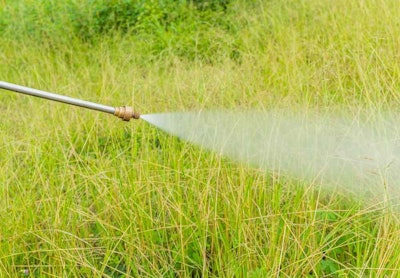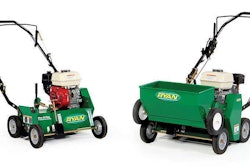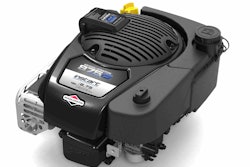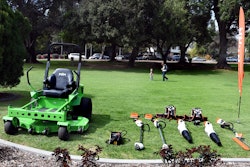
“In general, pre-emergents inhibit root development,” says Peter Landschoot, Ph.D., professor of turfgrass science at Penn State University. “They’re designed to stay on the surface of the soil where weeds are germinating. Typically, the effects last up to a few months, depending on environmental factors.”
In recent years, new products have been changing the playing field. “One advancement has been the introduction of chemicals that have longer residual control,” says Brian Ethridge, business leader for lawn care services with Waynes in Birmingham, Alabama. For example, products for warm-season turf such as Specticle (indaziflam) offer residual control up to eight months. Other improvements include the introduction of selective products such as Tenacity (mesotrione), which can be used when reseeding.
While new products can be expensive, they often have lower use rates so application cost per acre is less. In addition, a longer control period may have other benefits such as reducing the amount of post-emergent you need or protecting your client base. “If you’ve got weeds in the turf in spring when there’s a lot of marketing done by your competitors, your customers may shop for a new company,” says Ethridge.
No matter what product you choose, follow these rules for the best results:
1. Time it right.
You must start applications so that the last customer is done before weeds begin to sprout. “It’s better to get these chemicals down early rather than too late,” says Landschoot. In general, crabgrass seeds, which are the most potentially invasive and most expensive to control, germinate when the soil is about 50 to 55 degrees at a two-inch soil depth. Check regional soil temperatures through local soil labs for guidance, and pay attention to this year’s results so you can live and learn.
2. Apply chemicals correctly.
Most experts agree that there’s not a huge difference in how effective each product is. Choosing among them is a matter of availability, cost, and formulation. “A product that’s labeled by a quality company will work if applied correctly and at the right rate,” says Fred Kapp, educational director of the Green Industry Web portal. “What causes most failures is applicator error.” Incorrect application rates, missed areas, and even a technician who walks too fast when spraying impact effectiveness. Hands-on classes are helpful, especially when your crew has not worked with the products and equipment since the previous year. Required protective equipment should also be reviewed.
3. Calibrate your equipment.
There’s no such thing as being too careful when it comes to adjusting your equipment. “We do a bucket check several times a week because flow is the biggest potential error when spraying,” says Ethridge. It’s essential to determine and periodically re-test the flow rate of your pump and nozzle combination, nozzle angle, and application rate.
4. Know your products.
Always read the label. “Your product sales rep can also help offer insight into even the smallest details,” says Bryan Scroggins, Residex territory manager for Alabama. For example, some chemicals you’re spraying need a pH of 5.5 to 6.5. If you mix them with city water, which could have a pH of 7 or 8, that may reduce effectiveness, says Scroggins. In this case, using an inexpensive pH buffer in your tank could protect the chemicals from degrading. Don’t forget to keep the MSDS for each chemical and a spill kit on your trucks.
5. Stay informed.
Every state has different licensing and continuing education requirements. “In most places, you cannot spray even a few weeds in a planting bed without a current license,” says Kapp. Find links to your state’s licensing agency at www.npic.orst.edu. State lawn associations, turf trade shows, and extension outreach organizations at local universities can also help keep you informed about best practices, new products and changing laws.










